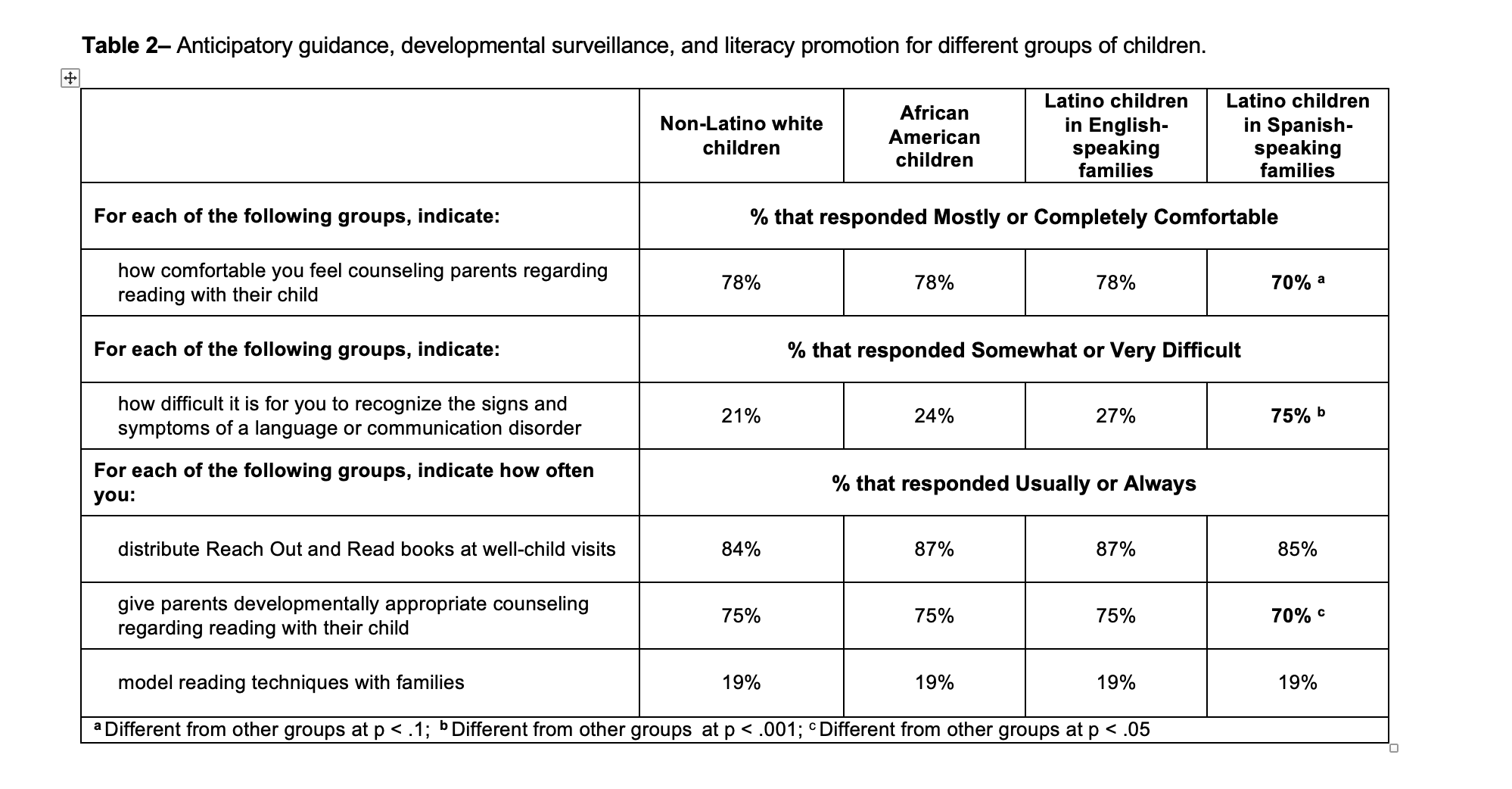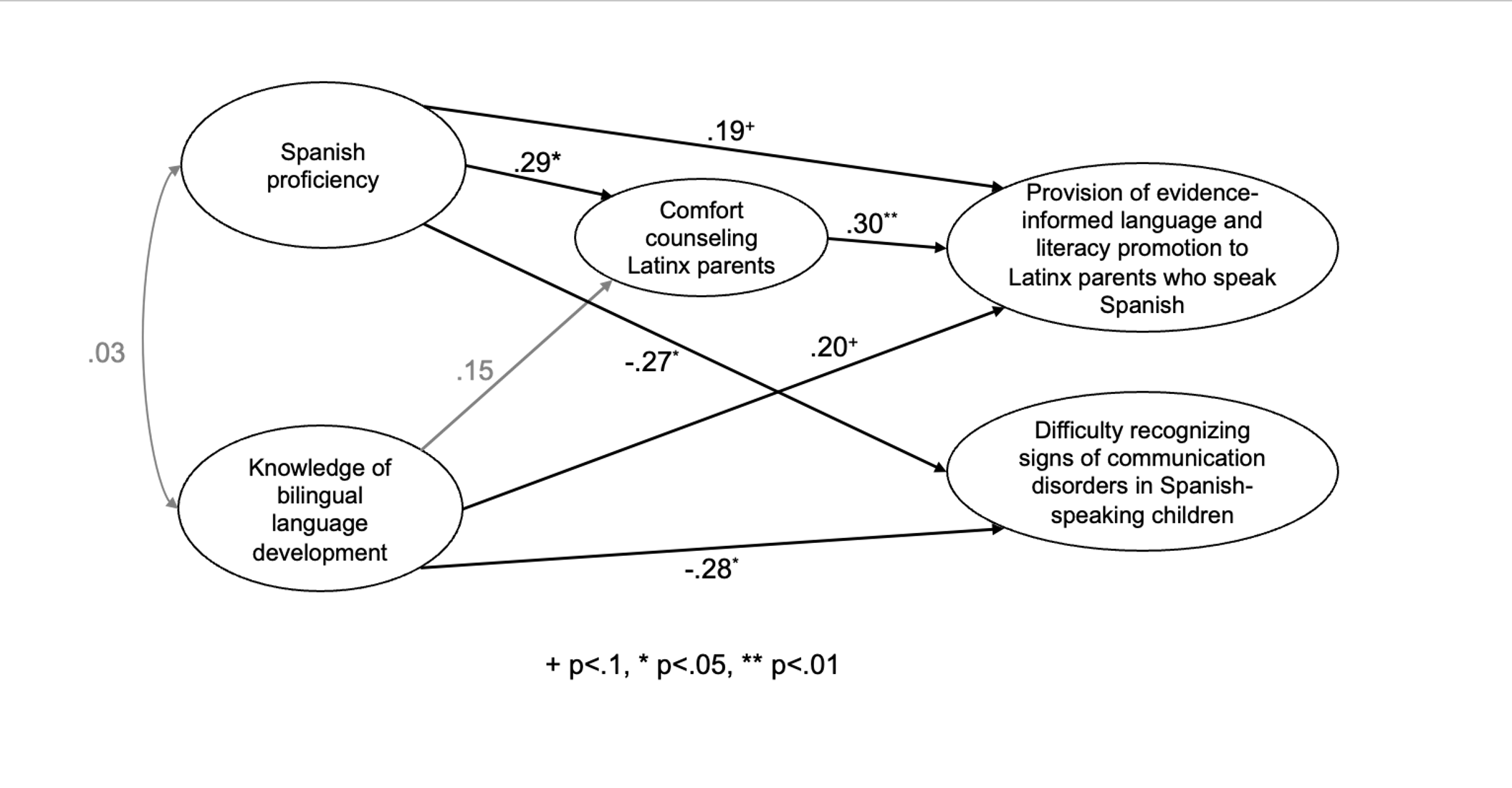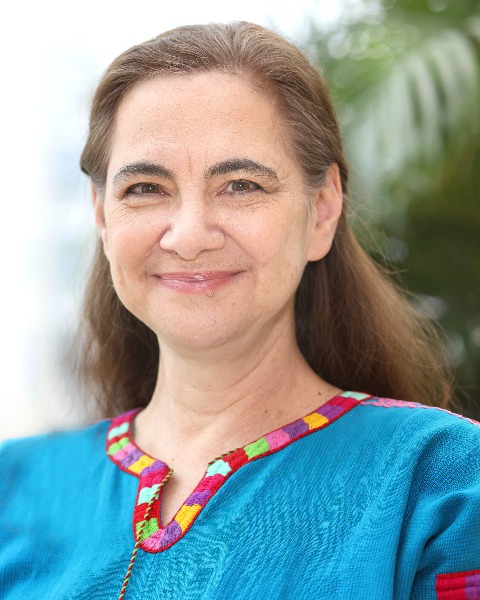Back
Background: Latinx children comprise 25% of children in the US, with the majority growing up as dual language learners. Yet pediatricians receive minimal training on bilingual language development.
Objective: The objectives of this study were to examine 1) pediatricians’ knowledge and attitudes about bilingualism, 2) their comfort counseling Latinx parents about bilingual language development, and 3) whether these factors are associated with pediatricians’ language and literacy promotion and developmental surveillance with Latinx children.
Design/Methods: Anonymous surveys were collected from pediatric residents and attendings in two different clinics (one in Chicago, IL, one in Winston-Salem, NC). Questions measured knowledge and attitudes about bilingual language development, comfort counseling families on this topic, and language and literacy promotion to families from different demographic groups. Mean levels of these variables, and the relationship between knowledge, attitudes, comfort, and practices were examined.
Results: 67 pediatric providers (37 at Site 1, 30 at Site 2) completed the survey. Participants’ knowledge-based responses in the questionnaire agreed with existing evidence on bilingualism 69% of the time. Only 29% of respondents felt comfortable counseling Latinx parents re bilingualism. 75% had difficulty recognizing signs of communication disorders in children from Spanish-speaking homes, compared to only 25% in children from English-speaking homes (p< .001). 67% routinely distributed Spanish language books to Spanish-speaking families, but only 33% usually or always provided counseling about bilingual language development. Multivariate analyses showed that respondents with higher Spanish proficiency or greater knowledge of bilingualism felt more comfortable counseling re bilingual language development, found it easier to recognize signs of communication disorders in Spanish-speaking patients, and were more likely to provide evidence-informed language and literacy promotion to Latinx parents.
Conclusion(s): While we identified significant gaps in pediatricians’ knowledge about bilingual language development, providers’ Spanish speaking ability and increased knowledge on bilingualism were associated with improved comfort counseling Latinx parents on this topic, recognizing signs of communication disorders in Spanish-speaking children, and providing appropriate language and literacy promotion to Latinx families. Results highlight the need for incorporating training about bilingual language development into pediatric resident education and increasing the number of Spanish speaking pediatricians.
.png)


Health Equity/Social Determinants of Health
Health Equity/Social Determinants of Health 2
535 - Pediatricians’ knowledge of bilingualism and provision of language and literacy promotion to Latinx families
Friday, April 28, 2023
5:15 PM – 7:15 PM ET
Poster Number: 535
Publication Number: 535.117
Publication Number: 535.117
Adriana Weisleder, Northwestern University, Evanston, IL, United States; Laura Pabalan, Rush University Medical Center, Chicago, IL, United States; Anna Miller-Fitzwater, Wake Forest University School of Medicine, Winston-Salem, NC, United States; Mariana Glusman, Ann & Robert H. Lurie Children's Hospital of Chicago, Chicago, IL, United States

Mariana Glusman, MD (she/her/hers)
Associate Professor of Pediatrics
Ann & Robert H. Lurie Children's Hospital of Chicago
Chicago, Illinois, United States
Presenting Author(s)
Background: Latinx children comprise 25% of children in the US, with the majority growing up as dual language learners. Yet pediatricians receive minimal training on bilingual language development.
Objective: The objectives of this study were to examine 1) pediatricians’ knowledge and attitudes about bilingualism, 2) their comfort counseling Latinx parents about bilingual language development, and 3) whether these factors are associated with pediatricians’ language and literacy promotion and developmental surveillance with Latinx children.
Design/Methods: Anonymous surveys were collected from pediatric residents and attendings in two different clinics (one in Chicago, IL, one in Winston-Salem, NC). Questions measured knowledge and attitudes about bilingual language development, comfort counseling families on this topic, and language and literacy promotion to families from different demographic groups. Mean levels of these variables, and the relationship between knowledge, attitudes, comfort, and practices were examined.
Results: 67 pediatric providers (37 at Site 1, 30 at Site 2) completed the survey. Participants’ knowledge-based responses in the questionnaire agreed with existing evidence on bilingualism 69% of the time. Only 29% of respondents felt comfortable counseling Latinx parents re bilingualism. 75% had difficulty recognizing signs of communication disorders in children from Spanish-speaking homes, compared to only 25% in children from English-speaking homes (p< .001). 67% routinely distributed Spanish language books to Spanish-speaking families, but only 33% usually or always provided counseling about bilingual language development. Multivariate analyses showed that respondents with higher Spanish proficiency or greater knowledge of bilingualism felt more comfortable counseling re bilingual language development, found it easier to recognize signs of communication disorders in Spanish-speaking patients, and were more likely to provide evidence-informed language and literacy promotion to Latinx parents.
Conclusion(s): While we identified significant gaps in pediatricians’ knowledge about bilingual language development, providers’ Spanish speaking ability and increased knowledge on bilingualism were associated with improved comfort counseling Latinx parents on this topic, recognizing signs of communication disorders in Spanish-speaking children, and providing appropriate language and literacy promotion to Latinx families. Results highlight the need for incorporating training about bilingual language development into pediatric resident education and increasing the number of Spanish speaking pediatricians.
.png)


